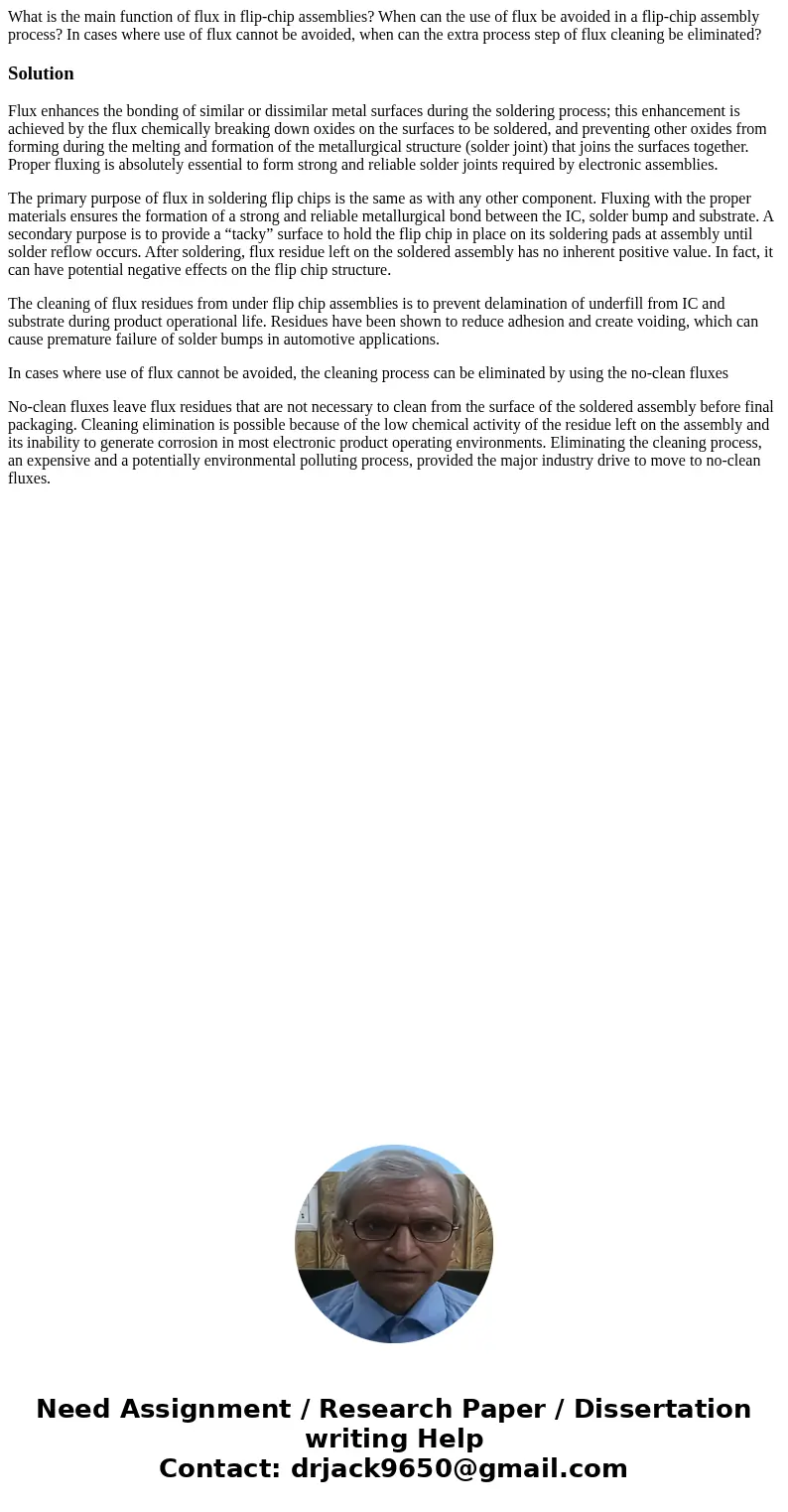What is the main function of flux in flipchip assemblies Whe
Solution
Flux enhances the bonding of similar or dissimilar metal surfaces during the soldering process; this enhancement is achieved by the flux chemically breaking down oxides on the surfaces to be soldered, and preventing other oxides from forming during the melting and formation of the metallurgical structure (solder joint) that joins the surfaces together. Proper fluxing is absolutely essential to form strong and reliable solder joints required by electronic assemblies.
The primary purpose of flux in soldering flip chips is the same as with any other component. Fluxing with the proper materials ensures the formation of a strong and reliable metallurgical bond between the IC, solder bump and substrate. A secondary purpose is to provide a “tacky” surface to hold the flip chip in place on its soldering pads at assembly until solder reflow occurs. After soldering, flux residue left on the soldered assembly has no inherent positive value. In fact, it can have potential negative effects on the flip chip structure.
The cleaning of flux residues from under flip chip assemblies is to prevent delamination of underfill from IC and substrate during product operational life. Residues have been shown to reduce adhesion and create voiding, which can cause premature failure of solder bumps in automotive applications.
In cases where use of flux cannot be avoided, the cleaning process can be eliminated by using the no-clean fluxes
No-clean fluxes leave flux residues that are not necessary to clean from the surface of the soldered assembly before final packaging. Cleaning elimination is possible because of the low chemical activity of the residue left on the assembly and its inability to generate corrosion in most electronic product operating environments. Eliminating the cleaning process, an expensive and a potentially environmental polluting process, provided the major industry drive to move to no-clean fluxes.

 Homework Sourse
Homework Sourse